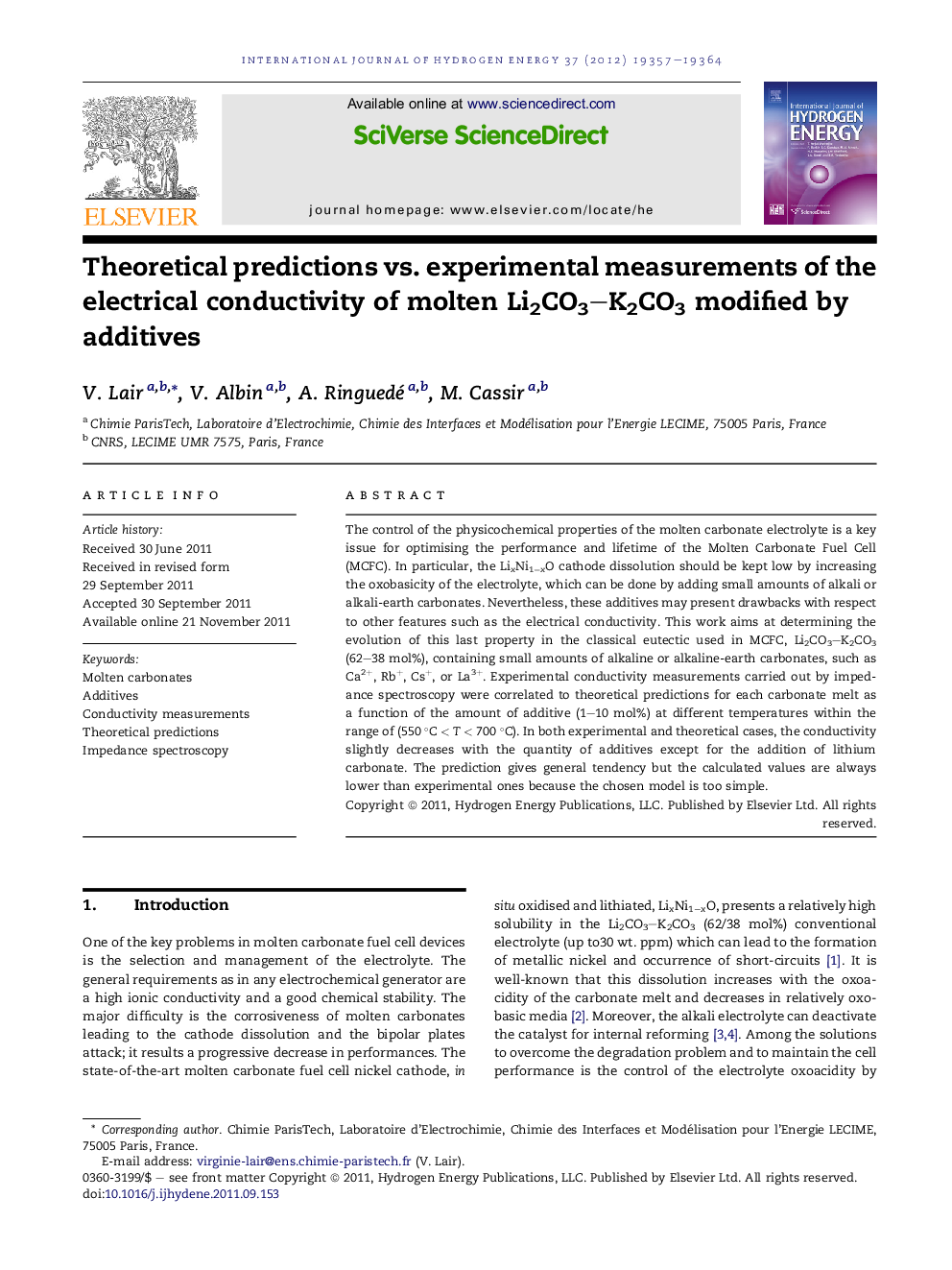| Article ID | Journal | Published Year | Pages | File Type |
|---|---|---|---|---|
| 1276148 | International Journal of Hydrogen Energy | 2012 | 8 Pages |
The control of the physicochemical properties of the molten carbonate electrolyte is a key issue for optimising the performance and lifetime of the Molten Carbonate Fuel Cell (MCFC). In particular, the LixNi1−xO cathode dissolution should be kept low by increasing the oxobasicity of the electrolyte, which can be done by adding small amounts of alkali or alkali-earth carbonates. Nevertheless, these additives may present drawbacks with respect to other features such as the electrical conductivity. This work aims at determining the evolution of this last property in the classical eutectic used in MCFC, Li2CO3–K2CO3 (62–38 mol%), containing small amounts of alkaline or alkaline-earth carbonates, such as Ca2+, Rb+, Cs+, or La3+. Experimental conductivity measurements carried out by impedance spectroscopy were correlated to theoretical predictions for each carbonate melt as a function of the amount of additive (1–10 mol%) at different temperatures within the range of (550 °C < T < 700 °C). In both experimental and theoretical cases, the conductivity slightly decreases with the quantity of additives except for the addition of lithium carbonate. The prediction gives general tendency but the calculated values are always lower than experimental ones because the chosen model is too simple.
